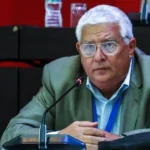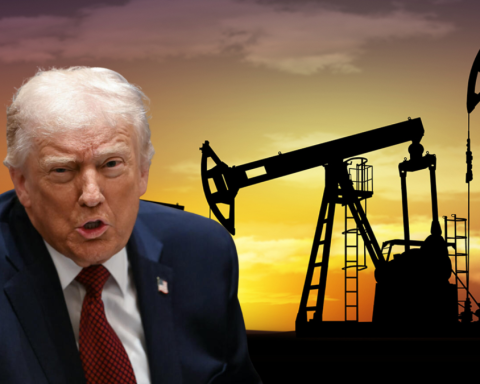Argentina has more than three people who investigate every thousand economically active inhabitants, the highest proportion in Latin America, and they are key players in responding to problems such as pandemics or the climate crisis, although specialists point out that “The definition of what science we want should be elaborated in conjunction with the whole of society”.
“The number of researchers we have in the country has to do with a very important trajectory and history of Argentine science, fundamentally in the medical area, which extends to these days,” the Minister of Science, Technology told Télam. and Innovation, Daniel Filmus, on the eve of the Day of the Scientific Researcher, which is celebrated every April 10.
According to a survey carried out by his portfolio, in 2020 there were some 90,397 people dedicated to research in the country (including fellows), of which 21,850 were from Conicet and the rest from other public entities (universities, Conae, Conea, INTI and INTA, among others) and private entities (universities, organizations and companies).
In that year, Argentina had 1,992 people investigating every million inhabitants, according to Ministry estimates.
Global comparison in 2022
“To make the international comparison, the indicator used is researchers expressed in full-time equivalent per 1,000 members of the economically active population (EAP),” they explained from Science and Technology, and in that measurement the country shows 3.18 researchers per thousand members of the PEA.
This figure places Argentina above Latin American countries such as Brazil (with 1.68 researchers per thousand members of the EAP), Uruguay (1.41) or Chile (1.01), and well above others in the region that do not have one researcher for every thousand economically active people, such as Mexico, Paraguay or Colombia.
However, the country is below Spain (with 6.25 researchers per thousand members of the PEA), Canada (8.4), the United States (9.51), Portugal (9.55) and far behind of nations that exceed 10 researchers per thousand economically active people such as Germany, France or South Korea.
“The number of researchers we have in the country has to do with a trajectory and a very important history of Argentine science”Daniel Filmus, Minister of Science, Technology and Innovation
CONICET
If you analyze the current database of the Conicet (April 2022), the body has 23,264 people who investigateof which half are scholarship recipients (11,876).
Of this universe, 25% (5,835) are dedicated to Agricultural Sciences, Engineering and Materials; 26% (6,195) to Biological and Health Sciences; 20% (4,860) to Exact and Natural Sciences; 24.8% (5,790) to Social Sciences and Humanities and only 2.5% (584) to Technology.
From a gender perspective, in the organism there are 53% female researchers and 60% fellowsa high percentage when compared to Europe and the USA, where the average number of women in Science is 35% and in Japan only 17%.
Nevertheless, women are the majority at the initial levels and their participation is reduced as the category is higher. In 2019 they represented 61.3% of the attending researchers, but they are only 24.5% of the senior researchers.
“I am very proud of our Argentine scientists, of their work, their commitment and their adaptability. On this day, I wish that, as a Ministry and as a society, we have the ability to awaken early vocations in science,” said Filmus for the Day of the Scientific Researcher that is celebrated every April 10 in honor of the birth of Bernardo Houssay, the doctor, pharmacist and first Argentine and Latin American to be awarded the Nobel Prize in Medicine in 1947.
Within the framework of the Financing Law of the National System of Science, Technology and Innovation, we launched from @Pink House federal programs #BuildScience Y #EquipScience to keep advancing #Towards the future.
Get all the details at: https://t.co/erfzdH1tdt pic.twitter.com/ffjrEdxvAo
— Ministry of Science, Technology and Innovation (@ciencia_ar) April 8, 2022
What science do we want?
Nicolás José Lavagnino, doctor in Biological Sciences and researcher at Conicet, pointed out, for his part, that “specific research topics are and/or should be defined in instances of discussion and elaboration where the vision of science and technology workers ( S&T) is put in turn in relation to other actors and actresses of the popular field, which does not currently exist as a formal space”.
Lavagnino said that it would be in these areas where “what science we want, for what and for whom” should be debated.
In relation to the themes, “to name just a couple, we can mention contributions such as alternative developments that seek to improve the performance of agroecological productions, more compatible with the right to a healthy environment. Also multidisciplinary contributions, and with the participation of the affected communities, and endemic health problems, whether they are infectious diseases such as Chagas and Dengue, or those caused by environmental pollution”.
“This does not imply separating the S&T system from a tremendous health problem such as the coronavirus pandemic, but rather broadening and deepening possible contributions to those problems that are also present in our people and communities,” he said.
“The decision about which are the pressing issues to investigate cannot be made without contemplating local and plural perspectives since the problems take shape in specific scenarios and also differentially harm”Paula Blois, doctor in anthropology and researcher
Along the same lines, the doctor in anthropology and researcher Paula Blois, stated that “the question about what are the pressing issues to investigate seems to me to involve dimensions that range from the training of the researchers themselves to national policies and geopolitical dynamics” .
“My point of view is that the decision about which are the pressing issues to be investigated cannot be made without contemplating local and plural perspectives, since the problems take shape in specific scenarios and are also differentially detrimental,” he pointed out.
As an example, he stressed that “for decades, diseases associated with pesticides used in industrial agriculture have been a pressing problem for many communities in our country, but there are no official public epidemiological data on this problem.”
“There are, yes, surveys of the neighbors and work by groups of researchers from different provinces,” he remarked.
“In short, the definition of what are pressing issues to be investigated is part of a fundamental dispute, taking into account that solutions are also at stake about who and how they deserve to live,” he concluded.
















